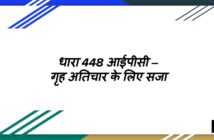An advocate files a Vakalatnama in a court before pleading a suit. Now, do you know what is a vakalatnama? In this article, we will discuss what is a vakalatnama, who can authorize a vakaltnama, what is its contents, duration and how can you cancel it, and does it need to be stamped.
What is a Vakalatnama?
A Vakalatnama is a written document that appoints an advocate to represent or plead for a client before a court of law. It is also known as Vakil Patra or Memo of Appearance. The word ‘Vakalatnama” is derived from the Urdu language meaning ‘power of an attorney.’ However, power of attorney is a different term in the court’s interpretation.
The Advocate’s Welfare Fund Act, 2001 has defined “Vakalatnama” under Section 2(u) as a memorandum of appearance or legal document empowering an advocate to plead or appear before any court or tribunal or authority on behalf of his client or party of litigation.
The person holding a Vakalatnama can be an advocate, pleader, attorney, or counsel.
Vakil Patra (VP) is used in many courts in online records or Roznama to indicate that a Vakalatnama is filed.
A Vakalatnama is attached to the last page of the plaint or suit. It does not require any fees. However, recently the Delhi High Court rules require an applicant to pay Rs. 10 to the “Advocate Welfare Stamp” attached to the Vakalatnama.
Who can authorize a Vakalatnama?
The following person can authorize a Vakalatnama:
- An aggrieved person or the affected party;
- A person holding a power of attorney;
- Representative in business or trade;
- Parents or guardian in case of a minor; or
- Joint party in a suit to appoint the same advocate or set of advocates.
What are the contents of a Vakalatnama?
A Vakatnama should contain the following particulars –
- Date of execution of Vakalatnama;
- Name of the case and court in which the advocate is being appointed;
- Name of the client or person authorizing the advocate;
- Name, designation, or authority of the person executing the Vakalatnama in case it is signed on behalf of the society, or company.
- A written document supporting the appointment of the advocate in case the Vakalatnama is not executed by the issuer in person.
- Where the Vakalatnama is executed through a power of attorney, a copy of the power of attorney should be attached along with the Vakalatnama.
- Where more than one person signs the Vakalatnama, their name along with the serial number should be mentioned in the bracket.
- The address of the advocate being appointed;
- What powers are given to the advocate;
- Signatures of the parties appointing and
- Advocate’s signature accepting the Vakalatnama.
What is the purpose of filing a Vakalatnama?
The purpose of filing a Vakalatnama is to ensure that there is a specific relationship between the client and the advocate. It indicates that the advocate has been given power by the client to represent or plead in a suit on his behalf.
What is the duration of a Vakalatnama?
The duration of Vakalatnama depends on the following factors –
- Death of the client or lawyer;
- The client withdraws the Vakalatnama;
- A lawyer withdraws a Vakalatnama with the approval of the court or
- The conclusion or judgment of the case.
Does a Vakalatnama need to be stamped?
Yes, a Vakalatnama must be stamped. As per Section 27 of the Advocate’s Welfare Fund Act, 2001 a Vakalatnama should bear a stamp.
An advocate should affix a stamp of Rs. 5 for filing a Vakalatnama before a District Court or Subordinate Court and a stamp of Rs. 10 on a Vakalatnama before the tribunal, High Court, or Supreme Court.
However, the appropriate Government may prescribe different stamp values not exceeding Rs. 25 on every Vakalatnama filed before the District Court, subordinate court, tribunal or other authority or High Court, or Supreme Court.
The stamp duty should not be collected from the client.
How to cancel a Vakalatnama?
A Vakalatnama can be withdrawn/cancelled/revoked either by an advocate or the client.
If an advocate intends to withdraw the Vakalatnama then he can do so by serving a seven days written notice to his client prior to the hearing of the matter informing him about his intention to withdraw the Vakalatnama.
An advocate can also make an application for Leave of the Court if the client appointing the advocate has instructed him to do so. Such an application must be made along with a written acknowledgement of the client. The Court may permit the advocate to withdraw his appearance if it is satisfied with the application.
If the client wishes to withdraw the Vakalatnama then, he can make an application before the Court about his intention. The Court may pass an order to discharge the advocate if it is satisfied with the application.
Difference between Vakalatnama and Power of Attorney
Vakalatnama and Power of Attorney may sound similar but there is a major difference between the two.
Vakalatnama has been defined under Section 2(u) of the Advocate’s Welfare Funds Act, 2001 as a memorandum of appearance or other legal documents which empowers an advocate to appear or plead before any court, tribunal, or other authority. Whereas, Power of Attorney has been defined under Section 1A of the Power of Attorney Act, 1882 as any instrument that empowers an agent or a person to act on behalf of a person.
In Vakalatnama, the client gives limited power to the advocate, and more specifically it allows only to plead in court. Whereas, in Power of Attorney, the principal gives vast power to the agent except to plead in court.
A Vakalatnama is filed only by an advocate, counsel, attorney, or pleader. On the contrary, a power of attorney can be given to any person, relative, representative, or agent.
Format of Vakalatnama
Vakalatnama
IN THE COURT OF ……………………………….
Suit/Appeal No………………………………………….. of 202…
In re:- ………………………………….. Plaintiff/Appellant/Petitioner/Complainant
Versus
………………………………………… Defendant/Respondent/Accused
KNOW ALL to whom these present come that I/We ………….. the above named ………… do hereby appoint:
(Hereinafter referred to as advocate) to be my/our Advocate in the above-mentioned case authorize him the following –
- To act, plead, appear in the above-mentioned case in this Court or in any other Court in which it is heard or tried and also in the appellate Court including the High Court on payment of separate fees for each Court by me/us.
- To file, sign, verify, and present appeals, pleadings, cross-examinations, or petitions for execution, review, withdrawal, revisions, compromise, or other petitions, affidavits, or other documents as necessary for the proper prosecution of the case at every stage on payment of fees for each stage.
- To file and return documents, to admit and/or deny the documents of the opposite party.
- To withdraw or compromise the case or submit to arbitration any differences or disputes that may arise relating to the said case.
- Taking execution proceedings.
- To deposit, receive, and draw monthly cash, cheques, and grant receipts and do such other acts as necessary for the progress and in the process of prosecution of the case.
- To appoint and instruct other legal practitioners empowering him to exercise the powers conferred on him whenever he thinks feasible and signs a power of attorney on our behalf.
- And I/We hereby agree to rectify and confirm all acts done by the advocate or his substitute in the matter as my/our acts, as if done by me/us.
- And I/We undertake that I/We or my/our duly authorized agent would appear in Court on all hearings and will inform the Advocate for appearance when the case or matter is called.
- And I/We hereby agree not to hold the advocate or his substitute responsible for ht result of the case.
- Whenever an adjournment cost is ordered by the Court, the Advocate shall receive and retain it for himself.
- And I/We hereby agree that the advocate is entitled to withdraw from the prosecution, in the event of the whole or part of the fee is remained unpaid. The fees settled should be only for the above-mentioned case. I/We further agree that once the fees are paid, they will not be refunded in any case and if the case prolongs for more than 3 years, I/We will pay the original fee again.
IN WITNESS WHEREOF I/We do hereby set my/our hand to these presents the contents of which have been read and understood by me/us on this …… day of ……. 202…
Accepted subject to the terms of the fees.
Advocate
(Signature)
Client
(Signature)
Conclusion
Vakalatnama is a legal document empowering an advocate to represent or plead a person in a suit or proceeding. An advocate is authorized through an aggrieved person, power of attorney, representative, or parent. A Vakalatnama can be revoked by the client or advocate by making an application before the Court for such withdrawal. A Vakalatnama expires on the death of the client or advocate, withdrawal of Vakalatnama, or when the order is passed by the Court. Vakalatnama is an essential document, all the contents in it should be mentioned without any default.

